Do you want to learn about the different types of flies in Missouri?
Finding information about the common types of flies in Missouri or other parts of the United States was not as easy as I thought. Some guides had too little information, some were incorrect, and others just didn’t provide what I was looking for.
That is why I created 10 Types of Flies in Missouri.
In this guide, you will learn about the different types of flies in your area, their harmful effects, their ecological importance, and everything else you must know.
10 Types of Flies in Missouri
#1. House Fly (Musca domestica)
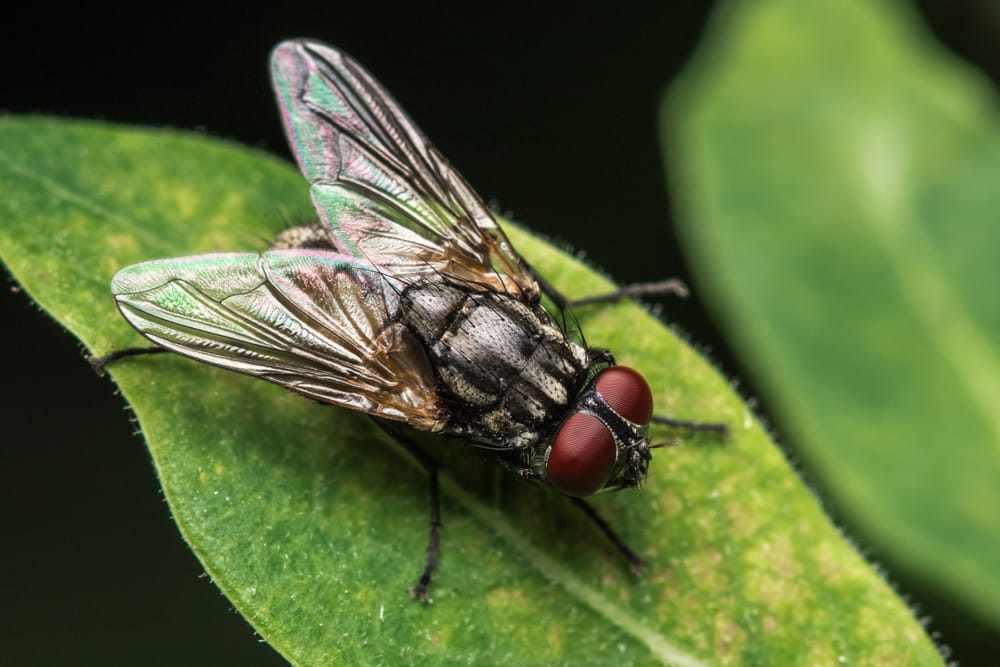
Identifying Characteristics and Facts
- Measure about 4 – 7.5 mm in body length.
- They are a great nuisance in homes, restaurants, and hotels.
- Mostly feed on decaying matter or other organic substances.
- Carriers of bacteria, pathogens, and viruses.
- Can spread illnesses such as diarrhea and even food poisoning.
No matter where you live, you’ve most likely encountered the common house fly. These are common in every household, not only in Missouri but also in all parts of the world.
This house fly is well-renowned for being bothersome and posing health risks. They are a great nuisance, especially in places where there is food like in the home dining areas, hotels, and restaurants.
Typically measuring between 4 to 7.5 mm long it showcases a body adorned with four stripes on its thorax. And as stated above, you will see these flies in most environments across the globe.
The usual diet of the house fly diet consists of decaying matter and organic substances which unfortunately makes them carriers of diseases as mentioned.
They can transport pathogens like bacteria and viruses on their bodies thereby contributing to the spread of illnesses including diarrhea, food poisoning, and eye infections.
#2. Common Fruit Flies (Drosophila melanogaster)
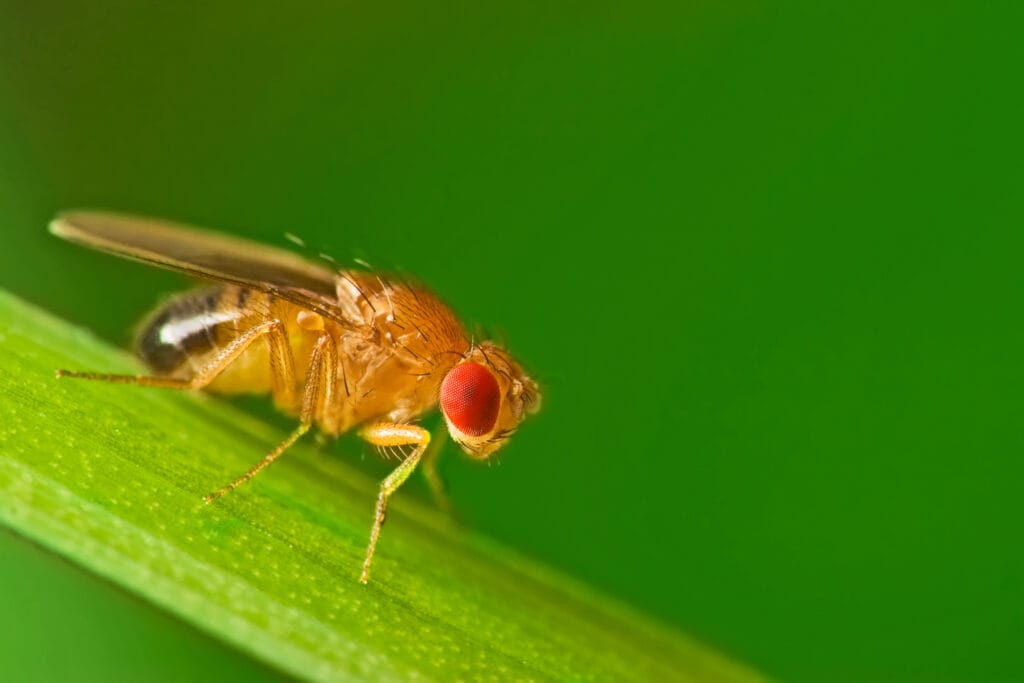
Identifying Characteristics and Facts
- They are about 3mm in body length.
- They have a short lifespan.
- Mostly found where there are decaying or rotten fruits or vegetables.
- Brick-red eyes and yellow-brown body.
- Females are usually larger in size compared to males and have a more rounded abdomen
- Usually attracted to moisture and light.
Fruit flies, scientifically known as Drosophila melanogaster are insects that are among the common types of flies in Missouri and the United States. They are also well-known all over the world.
These flies have a short lifespan and measure around 3mm in length. These flies also have a body with red eyes and are commonly found near decaying fruits and vegetables where they feed on the yeast and bacteria that thrive in those environments.
With a lifecycle of 10 to 14 days, these flies while they are still active can also be a nuisance, especially in kitchens, dustbins, or any other place where there are decaying fruits.
If you want to get rid of these flies, of course, you will need to do nothing other than remove fruits that have rotten or any rotten organic matter that could be in your home.
#3. Horse Fly (Tabanidae spp.)
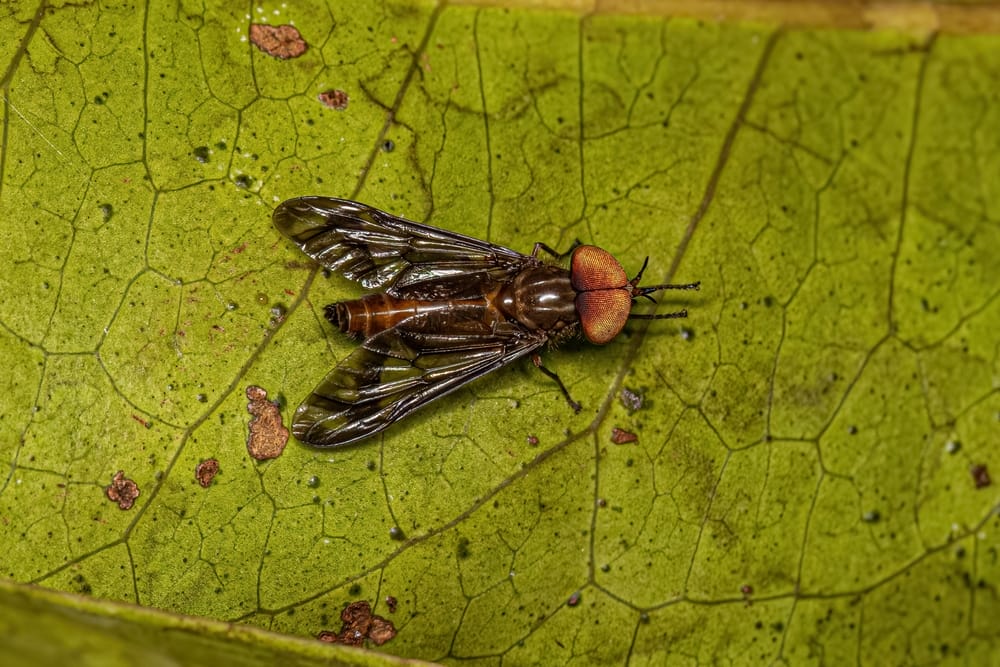
Identifying Characteristics and Facts
- Large and about 1 inch in length.
- Black or dark-brown body coloration.
- Have metallic sheen and dark eyes.
- Have clear wings with some dark markings and have some long mouthparts for piercing.
- Active mostly during the day and get attracted to moving objects or animals.
Horseflies are insects that feed on blood and belong to the Tabanidae family. They are one of the common types of flies in Missouri but you will as well see them in other regions.
These flies are known pests that mainly target livestock such as horses, cattle, and even humans. They use their mouthparts to deliver some bites and to extract blood, which can potentially transmit diseases and cause discomfort.
These flies are easily recognizable due to their size as they typically measure between 1 and 2 centimeters in body length. Their vibrant eyes also distinguish them from other flies.
#4. Cluster Flies (Pollenia spp.)
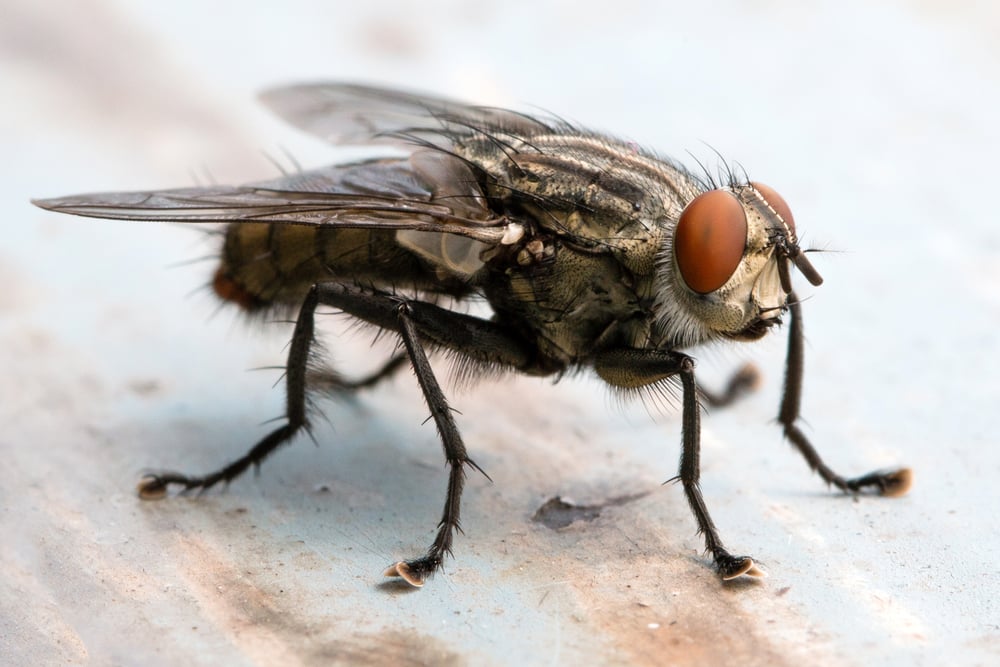
Identifying Characteristics and Facts
- Dull and grayish-brown.
- Similar but larger than the houseflies.
- Usually slow-moving and attracted to light.
- Can be a nuisance when they gather in numbers.
- Do not lay eggs indoors like houseflies do.
- Harmless to both pets and humans as they do not sting or bite.
Cluster flies are some of the insects you will see in Missouri habitats and other parts of the country. These flies are similar to houseflies as they have behaviors and life cycles just like the houseflies do.
During their larval stage, cluster flies parasitize earthworms. They live in the soil until they reach the pupation phase. When they become adults, which typically happens in summer or early fall, they seek shelter in buildings to hibernate during the winter months.
These flies tend to gather in numbers in attics or wall voids which can be quite bothersome since they can be great nuisances for homeowners. Unlike houseflies, cluster flies do not lay eggs indoors.
#5. Blow Fly (Calliphoridae spp.)
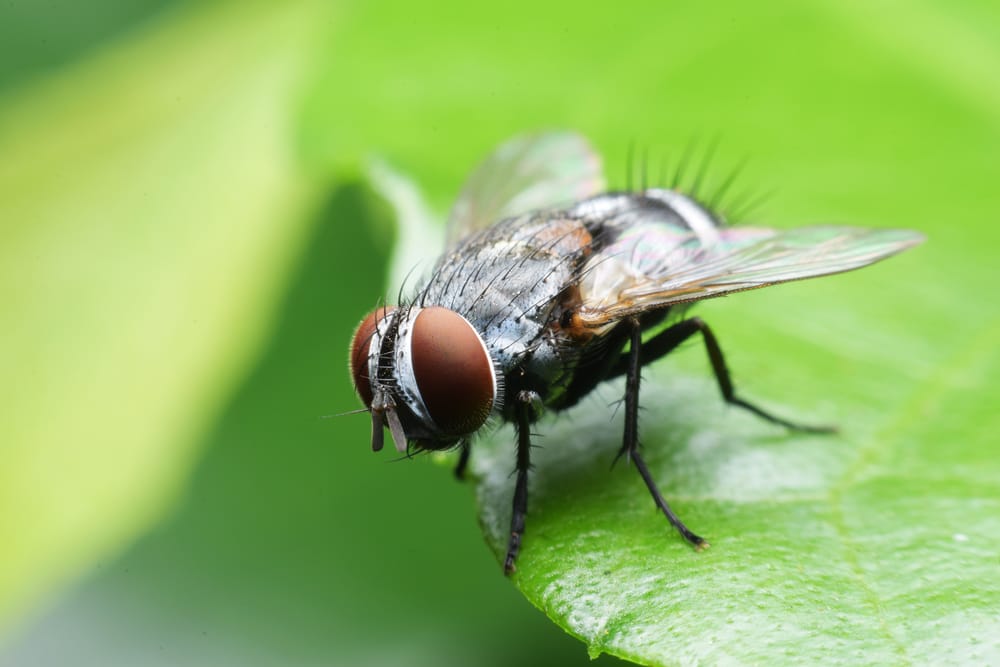
Identifying Characteristics and Facts
- Lay their eggs on decomposing tissues.
- Help in speeding up decomposition.
- About 8 – 10 mm in body size.
- Attracted to rotting matter such as decaying meat.
- May transmit diseases when it comes in contact with animals or humans.
These flies play a critical role in the ecosystems that they inhabit. Of course, they are so present and one of the common flies in Missouri among other flies that you see.
When it comes to their significance as mentioned, these flies help a lot in breaking down matter such as carrion and decaying material. With their sense of smell, blow flies are often the insects to arrive at the location of a deceased animal, where they lay their eggs on the decomposing tissue.
It’s also worth noting that their larvae or maggots consume the tissue of dead animals hence speeding up the decomposition process and returning nutrients back to the environment.
#6. Deer Fly (Chrysops cincticornis)
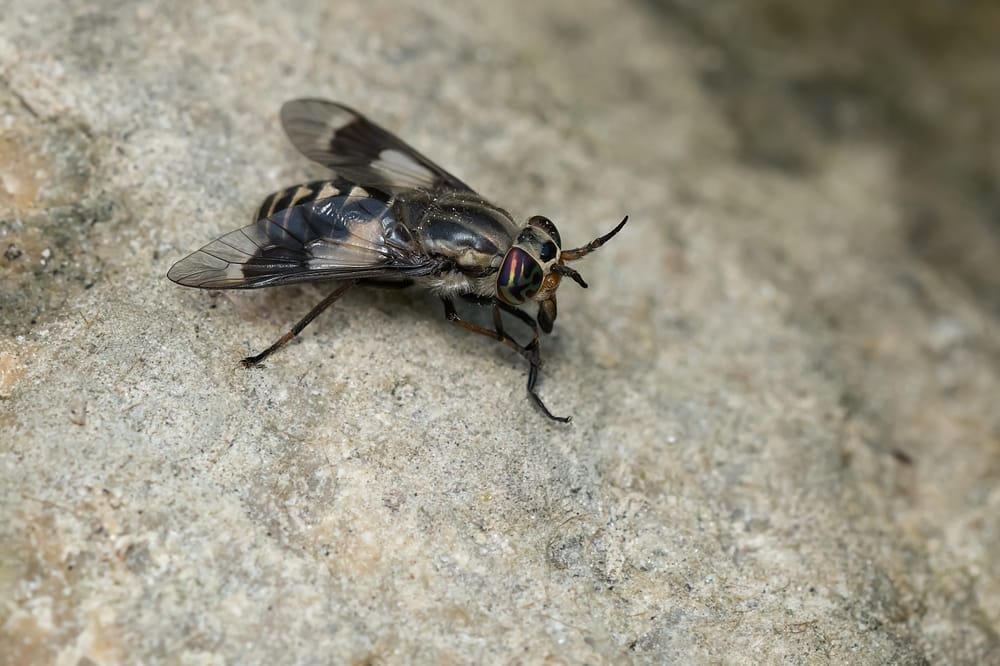
Identifying Characteristics and Facts
- Small in size and measure about 6 – 10 mm.
- They can bite and their bites are usually painful.
- They inhabit water bodies and also wooded areas.
- Bodies are colored with patterned wings.
- Mostly feed on blood from their hosts’ bodies.
Another one of type of flies in Missouri and other parts of the United States is the deer fly, scientifically known as Chrysops cincticornis is an insect that feeds on blood and is also common in other parts of the world.
These flies are notorious for their painful bites, particularly targeting mammals like humans. They thrive in environments near bodies of water and wooded areas.
Adult Deer Flies are typically small measuring around 6 to 10 mm with colored bodies and distinct wings that have unique patterns. The female flies require blood meals to develop their eggs and their mouthparts that resemble the scissors, and they use this to cause bites on their hosts.
#7. Crane Fly (Tipuloidea spp.)

Identifying Characteristics and Facts
- Look almost like mosquitoes.
- They do not carry diseases.
- They have delicate bodies and fragile legs.
- Serve a great role in promoting plant pollination.
- Larva usually feed on decaying matter.
- They are harmless but their numbers can be a nuisance.
Crane flies are insects that look like mosquitoes. However, unlike mosquitoes, they do not carry diseases. They are known in many parts of the world and are also common types of flies you will see in Missouri and the United States.
These insects have delicate legs and bodies. They can be found in various habitats and serve important ecological roles as both pollinators and prey for other animals.
Their larvae, commonly known as ‘leatherjackets’ live in environments such as soil and aquatic areas and feed on decaying matter. And although these flies are harmless to humans, they can sometimes become a nuisance when they appear in numbers around the homes.
#8. Stable Fly (Stomoxys calcitrans)
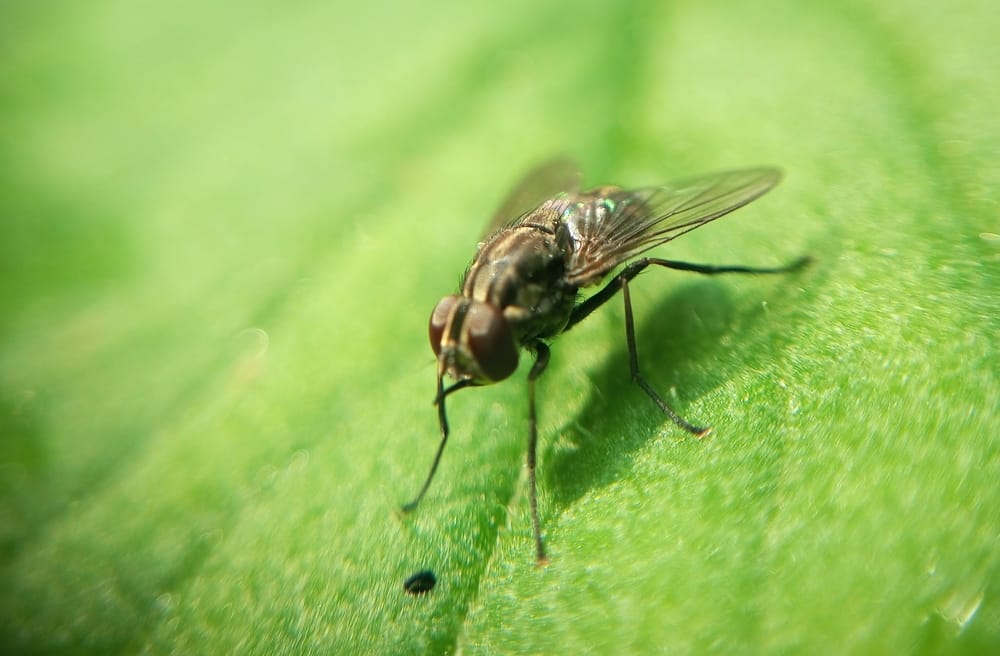
Identifying Characteristics and Facts
- Have great similarities with the houseflies.
- Have proboscis for piercing.
- Feed on blood hence can deliver painful bites that can cause discomfort.
- Inhabit areas where animals are present.
- Usually breed in decaying matter such as manure.
The Stable Fly, also known as Stomoxys calcitrans is an insect that can be quite bothersome and economically significant as well. They are abundant in Missouri habitats and also common in different regions around the world.
These flies share some similarities with a housefly. One of its features is its proboscis, which it employs to puncture the skin of various animals including humans in order to feed on their blood.
The bites from stable flies can be quite painful and can cause discomfort for both livestock and people ultimately affecting their health and productivity.
As the name suggests stable flies are frequently found around farms, stables, and areas where animals are present. They tend to breed in decaying matter like manure where their larvae undergo development.
#9. Black Fly (Simuliidae spp.)
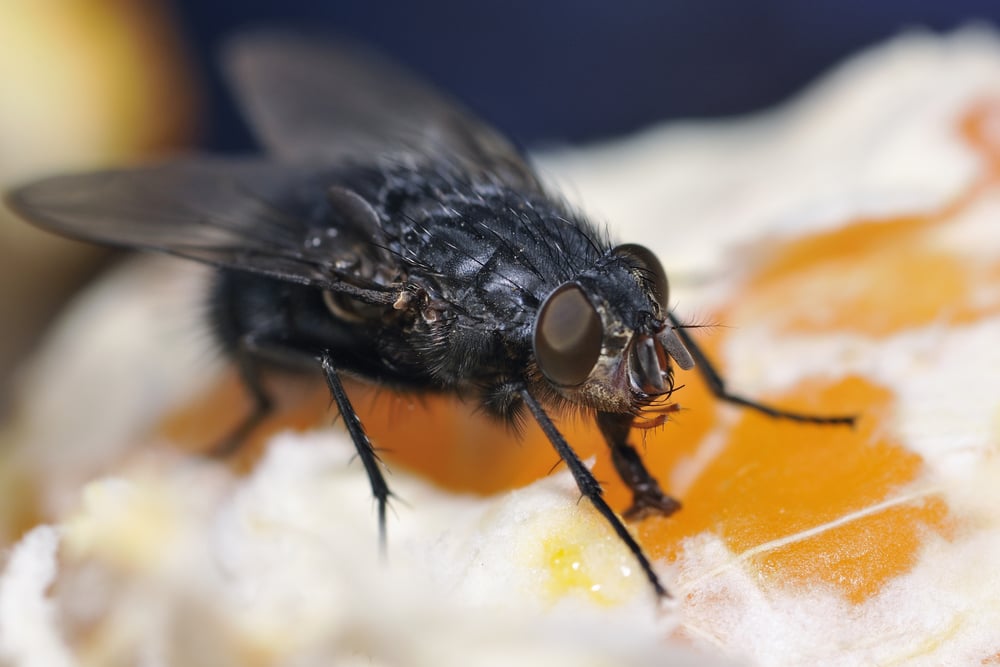
Identifying Characteristics and Facts
- They survive by feeding on blood.
- Can sting or bite causing painful itching or allergic reaction.
- Larvae usually inhabit flowing freshwater streams.
- Their presence in water indicates water quality.
- They are annoying pests that also can transmit diseases.
Black flies are a type of insect that survive by feeding on blood. They are present all over the world and also in Missouri’s habitats.
These small creatures have gained quite some popularity due to their bites which often result in itchiness and allergic reactions in both humans and animals. Black flies exist in both larval and adult forms with the larvae inhabiting flowing freshwater streams and rivers.
They play a role in ecosystems by indicating water quality and serving as a food source for organisms. However, despite their significance black flies are considered pests due to the annoyance they cause and their potential to transmit diseases.
#10. Botflies (Oestridae spp.)
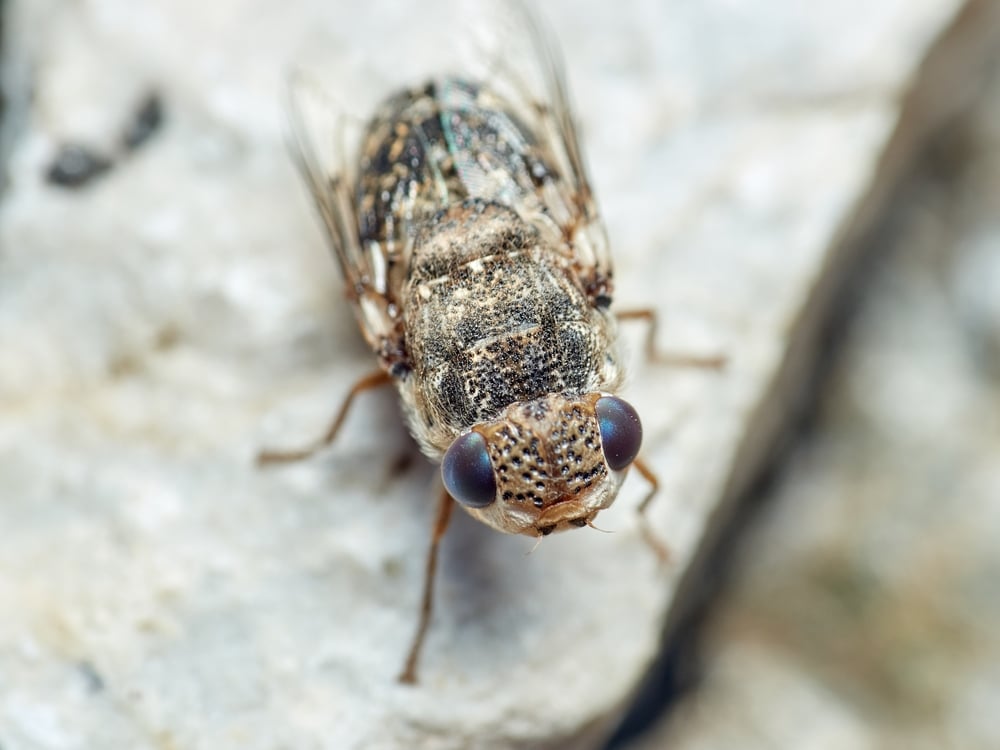
Identifying Characteristics and Facts
- Their bodies are covered with some hairs.
- Colors may vary from reddish-orange to black.
- Usually lay eggs on the mammals’ hairs or bodies.
- Larvae are parasitic and stay in the host’s body for some weeks.
- They are the size of a honeybee.
Last on our list of the common types of flies in Missouri are the botflies. Although they are dominant in Missouri, they are also present in most regions all over the world.
These flies have a lifecycle where their larvae develop inside the body of their host. The adult female botflies lay their eggs on the skin of the host, which hatch and burrow into the flesh causing a swelling or lump called a warble.
The larvae feed on fluids from tissues to grow, and they eventually emerge from the host as developed larvae to pupate in the soil.
Their parasitic behavior can lead to discomfort, infections, and financial losses in livestock. Therefore, there is a need for effective control measures to identify and remove the larvae and also to employ some preventive measures to curb their spread.
As a reminder, the below factors are common for the most common insects:
- Most can be found in your house, yard, or garden
- Most are not harmful to humans or pets but can be annoying and cause irritation
- There are easy ways to attract and deter common flies in Missouri
- Most of these flies can be easily removed or killed
